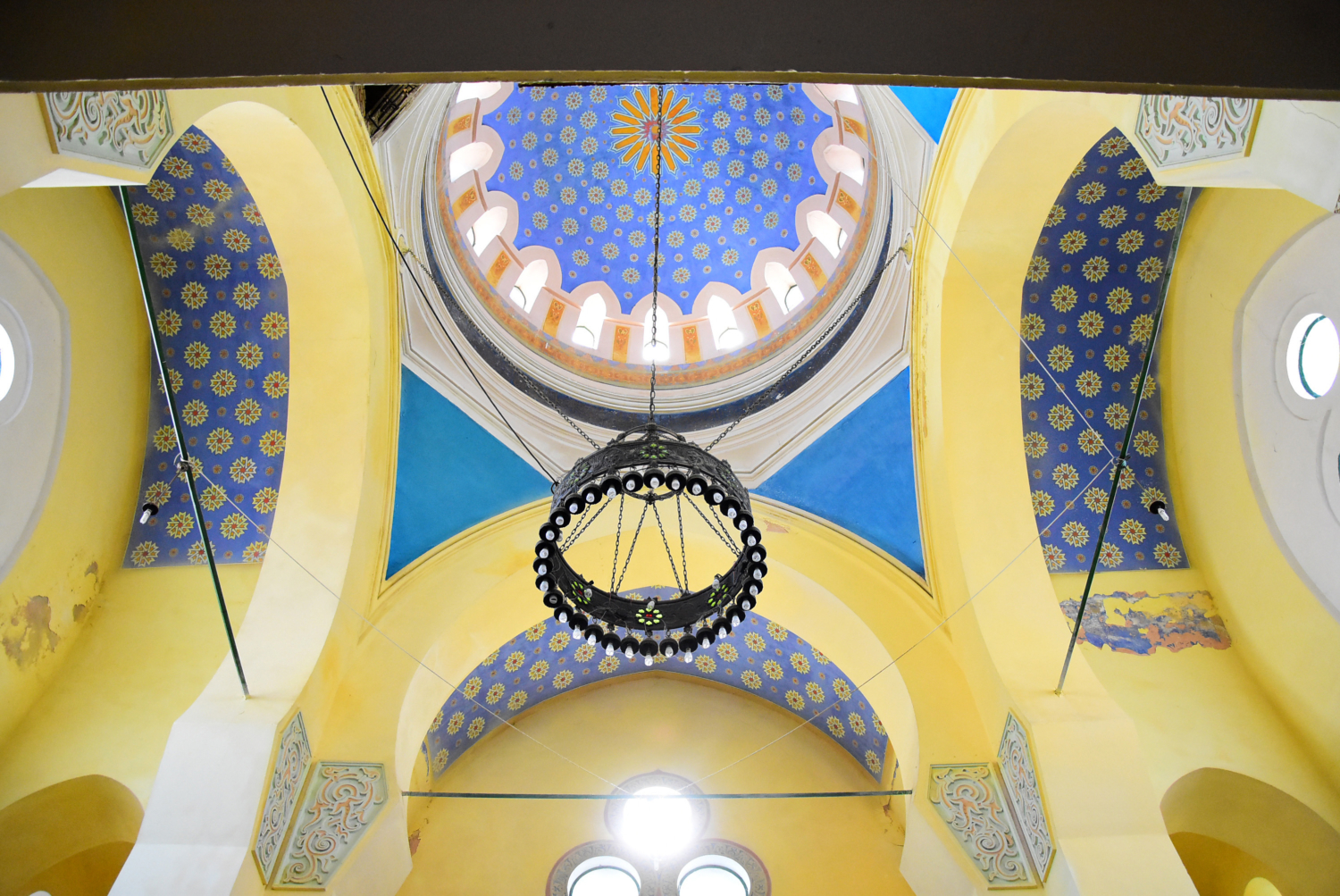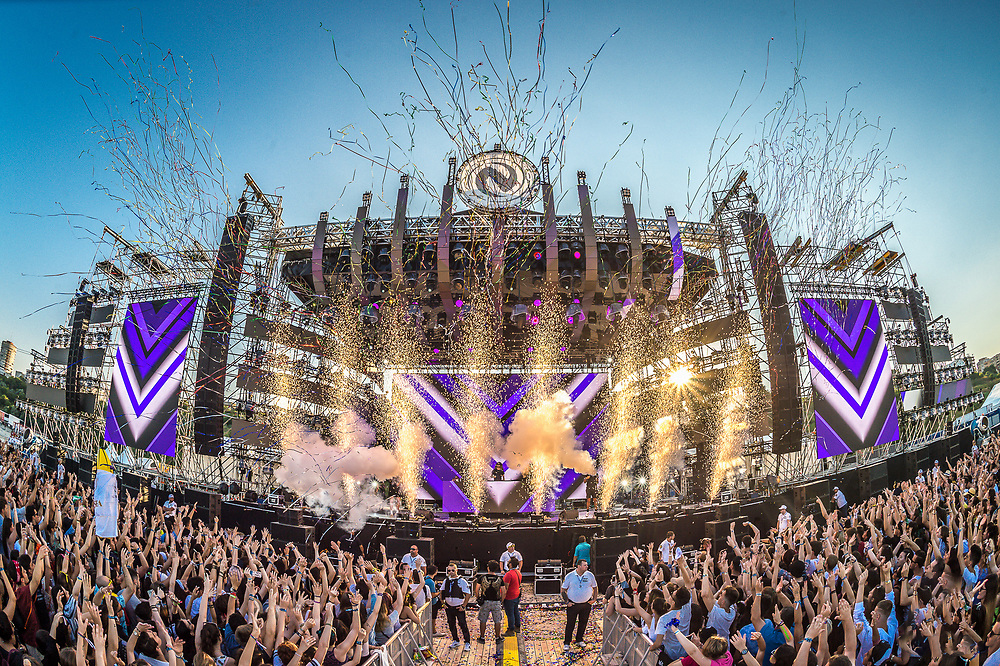Constanța, Romania
Since October 8, 2019
BRIEF HISTORY
An ancient metropolis, Romania’s oldest continuously inhabited and the country’s largest sea port, Constanta traces its history more than 2,500 years. Originally called Tomis, legend has it that Constanta was visited by Jason and the Argonauts after finding the Golden Fleece. Founded by Greek colonists from Miletos in the 6th century BC, Tomis was conquered by the Romans in 71 BC and renamed Constantiana by Roman Emperor Constantine the Great in honor of his half-sister.
Constanta flourished during the 13th century, when Genoese merchants dominated the Black Sea but the city began to decline two centuries later, when it fell under Turkish rule. During the Ottoman era its name was shortened to Constanta.
In 1878, after the Romanian War of Independence, Constanta and the rest of Northern Dobrudja were ceded by the Ottoman Empire to Romania. The city became Romania’s main seaport and transit point for many of our country’s exports. The Constanta Casino, which is both a historic monument and a modern symbol of the city, was the first building constructed on the shore of the Black Sea after Dobrudja came under Romanian administration, with the cornerstone being laid in 1880.
On October 22, 1916 (during World War I), the Central Powers (German, Turkish and Bulgarian troops) occupied Constanta. According to the Treaty of Bucharest in May 1918, Constanta remained under the joint control of the Central Powers. Allied troops liberated the city in 1918.
In the interwar years, the city became Romania’s main commercial hub, so that by the 1930s over half of the national exports were going through the port. During World War II, when Romania joined the Axis powers, Constanta was one of the country’s main targets for the Allied bombers. While the town was left relatively undamaged, the port suffered extensive damage, recovering only in the early 1950s.
Constanta is now an important cultural and economic centre, worth exploring for its archaeological treasures and the Old Town’s architecture. Its historical monuments, ancient ruins, grand Casino, museums and shops, and proximity to beach resorts make it the focal point of Black Sea coast tourism.
ADMINISTRATIVE DATA
Situated in the South-East of Romania, Constanta is one of the most resourceful cities in the country: the biggest port on the Black Sea and one of the major European ports, an important university center, as well as a touristic city with remarkable history and the most up-to-date, voguish and populated tourist resort of the Romanian riviera – Mamaia Resort.
Constanta is located on the Black Sea Coast, 185 miles north of Istanbul and Bosphorus Strait (Turkey) and 99 miles north of Varna (Bulgaria), with a population of about 310,000 people. It is the administrative center of the county with the same name and the largest city in the Southeastern development region of Romania.
It is also part of Dobrudja region, a true model of interethnic, multicultural and interconfessional dialogue, as here live harmoniously 18 minorities, which represent 10% of the total population of the region, the Turkish and the Tatars being the most numerous ethnic groups.
Due to its strategic position at the border of NATO and the European Union, the safety of the region is increased by the NATO military base situated in Constanta County, which gives the opportunity to local authorities to contribute to the development of the Strategic Partnership between Romania and the United States of America.
ECONOMY
Known as one of the largest port cities in Europe with a variety of intermodal connections, Constanța evolved over time into one of the most promising business opportunity locations the EEC can offer. With a rich history of culture, business and trade, Constanta became one of the most competitive and dynamic cities in the European Union during the last decade.
Constanta has a complex economical structure: tourism, port activity and maritime transport, shipbuilding and trade, while the main sectors that have driven the Constanța economy in recent years are: oil production, tourism, ship building, retail and real estate. Real estate, entertainment (arts and recreational activities), and oil refining have registered the most dynamic growth in recent years. Main exports include: oil products, ships, agricultural products (one of the main products handled by the Constanța Port) and metals (also handled by the Port).
Just as important, Constanta is the only Romanian city served by all modern transport routes, namely road, rail, sea, river and air. Mihail Kogalniceanu International Airport is located at about 25 km far from Constanta, and Tuzla Utilitarian and Leisure Airport is the first Romanian private leisure airport.
The existent port infrastructure, as well as the good connective infrastructure (ring road, highway to Bucharest, high-speed rail to Bucharest, channel to the Danube) make Constanta an ideal investment site for logistics companies and manufacturing companies. Constanta is actually an ideal investment site for assembly work (particularly for bulky products, such as automobiles or electronics), for companies outside the EU looking to get access to the EU markets.
As a maritime port, the Port of Constanta offers a lot of advantages, among which, the most important are:
- a hub for the container traffic in the Black Sea
- a hub for cereals in Central and South-East Europe
- good connections with all means of transport: railway, road, river, airway and pipelines
- modern facilities for passenger vessels
- land availability for future expansion
- starting January 1st 2007, the Port of Constanta has become a port with customs facilitations
- Ro-Ro and Ferry-boat terminals suitable for the development of short sea shipping serving the Black Sea and the Danube countries.
The Port receives regular container deliveries from various ports in Asia, Africa, the Middle East, and Europe (Bulgaria, Greece, Italy, etc.). There is also a regular Ro-Ro/Ferry to Barcelona, Tanger, Malaga, Vigo, Setubal, Valencia, Pireu, Borusan. More recently, cruise sheeps dock in the Constanta Port, with the final destination in Turkey, Greece, Italy, Croatia, etc.
Another important aspect, Constanta is the first city in the world that signed a contract for technical assistance with World Bank. One of the benefits was the delivery of a Competitive Profile, with a comprehensive overview of the key advantages the city offers to potential investors. Also, an Asset Management Strategy was prepared, which would help the local administration to strategically use its assets for the creation of new jobs. Moreover, an Investments Attraction Unit was created, which pro-actively engages investors, organizes events for investors, or participates in such events.
TOURISM
Constanta is a perfect mix between old and new, between history, tradition and modernism, between summer fun and quality multiculturalism, a unique religious mosaic in Europe and a city full of business opportunities.
Here there are unique archaeological vestiges, iconic Romanian and international heritage buildings, and one can spend an ideal holiday on the large and sunny beaches of the Black Sea. The Casino, the Aquarium, the Roman Edifice with Mosaic, the Roman Thermae, the museums, the cultural institutions, the Ovid Square, the Old City Centre, the Archaeological Park, Constanta Port are just some of the touristic and economic attractions that should not be missed.
The Casino – With a history of over 130, always present in the holiday photos of tourists, it is the emblematic building of Constanta. Inaugurated in 1910 in the presence of Prince Ferdinand, the Casino is the most representative building in the Art Nouveau style in Romania.
The Archaeological Park – Situated in the heart of Constanta City, the park is the place that emanates the perfume of the history of Tomis Fortress. Here there are exposed dozens of vestiges: columns, amphorae, capitols.
The Statue of Ovid – It was made in 1887 by the Italian sculptor Ettore Ferrari. There is an identical replica in Sulmona, his hometown in Italy. Ovid was exiled and wrote his poetry in the ancient fortress of Tomis, Constanta of nowadays.
The Genoese Lighthouse – The foundation of the original lighthouse, dating back to 1300, which guided the ships within a radius of 2 nautical miles, was of use to the French-Armenian engineer Artin Aslan who built the present edifice between 1858 and 1860, at the command of an English company.
Tomis Marina – Perfect for a fairytale-like sunset, Tomis Marina is the place where you can get on board a boat that can take you on a dream trip on the Black Sea. At the terraces and restaurants in the area you can enjoy fish and seafood dishes until late at night.
The Orthodox Cathedral of the Saint Apostles Peter and Paul – The monumental churh was built between 1883 and 1885 as the first Romanian church in the City of Constanta after the War of Independence in 1877. The construction plans belong to the renowned Romanian architect Ion Mincu.
The Church of the Great Martyr Saint Mina – The orthodox church was built between 1995-1997 in the Romanian style by a team of woodworkers from Maramures. It is the largest wooden church in the country. The tower is 43 m tall.
Carol I Grand Mosque – The architectural monument was raised at the initiative of King Carol I as a tribute to the Muslim community in Constanta. If you climb the 140 spiral steps of the minaret, you will end up in a balcony where you have a panorama of the old area of the city.
The Museum of National History and Archaeology – The museum was, for a period, the headquarters of Constanta City Hall. It includes one of the richest collections of ancient artifacts in Romania. The exhibition area covers three floors. On the ground floor there are two halls of treasury, and the first floor comprises the old and medieval history of Dobrudja. On the second floor the section of modern history is presented.
The Folk Art Museum – The local folk art collection was established in 1975. The museum building dates from 1893 and is an architectural monument. The basic exhibition covers all genres of folk art distributed across ethnographic areas.
The Natural Sciences Museum Complex is considered an important reference point for the cultural and scientific image of the municipality, with a high emblematic value in the summer offer of the Romanian seacoast. It consists of Dolphinarium, Planetarium, Exotic Birds Exhibition, Micro Delta.
Mamaia Resort – with its Holiday Village, gondola lift, water park, clubbing area, the Mamaia Casino, water sports, marine pontoon, the Yacht, Retro Wave, Net and Seagulls suspended walkways.
According to a World Bank survey, half of the Romanian population (around 10 million people) has visited Constanta at least once in the past 5 years. There are more than 30,000 formal and informal lodging units in Constanta. More than 80% of the city’s accommodation is concentrated in the Mamaia Resort, where over 1.1 million square meters of lodging units are built, most with functions of accommodation, catering, and leisure. Mamaia is the most popular beach resort and it’s known for its beach with fine sand that extends 8 kilometres and is 100 metres wide, its vibrant nightlife and restaurants. The tourists can enjoy trips by hydro-bicycles, windsurfing, parachute lifting, diving, the yachting school, water skiing, leisure with sail boats on the Siutghiol Lake and on the seaside.
Constanța’s tourism based and substantial potential for growth make it an ideal location for public-private investments in tourism infrastructure with a focus on expanding the international tourism market.
HIGHER EDUCATION
Constanta is also an important university center. The largest university in Constanța is “Ovidius” University, with 16 faculties, 87 specialties (covering a broad spectrum, from economics and law, to engineering, construction, and medicine) and around 10,000 students. The Constanta Maritime University trains around 5,000 students in the area of marine science and sea navigation. The ”Mircea cel Bătrân” Naval Academy is a military tertiary institution, under the coordination of the Ministry of National Defense, with a total of around 2,000 students. There are also several private universities.
INTERNATIONAL FIGURES FROM CONSTANTA
Simona Amânar, Olympic gold medal-winning gymnast
Răzvan Florea, Olympic bronze medal-winning swimmer
Gheorghe Hagi, footbal player
Simona Halep, tennis player
Andrei Pavel, tennis player
Cătălina Ponor, Olympic gold medal-winning gymnast
Anastasia Soare, business woman
Alexandra Stan, singer
Horia Tecău, tennis player

















